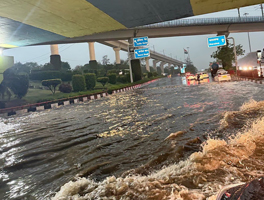 |
Dear readers,
Welcome to the Climate Weekly newsletter by the Centre for Science and Environment’s Climate Change programme and Down to Earth.
A new study on extreme weather-linked mortality in India has found that nearly 35,000 people died from heat and cold temperature extremes between 2001 and 2019. Down to Earth’s Rohini Krishnamurthy highlights how extreme heat killed more people than cold extremes—19,693 deaths from heatstroke and 15,197 from cold exposure—over the past two decades. Further, the study found that working-age men were particularly vulnerable to heat-related deaths.
For this study, researchers analysed national and state-level data, revealing that Andhra Pradesh, Uttar Pradesh, Punjab, Odisha and West Bengal had the highest heat stroke-related deaths. Uttar Pradesh, Punjab, Bihar, Haryana and Jharkhand were the worst affected by cold extremes. The gendered aspect of the study stands in contention with previous analyses where women were found to be more vulnerable to weather-related mortality, but this may be due to the outdoor-focused nature of the study. Indian women spend 54 per cent more time indoors than men, which carries its own health risks due to poor built environment conditions.
Continuing with warming trends in India, there is considerable debate on the impact of aerosol pollution and whether it explains India’s slower warming compared to the rest of the Northern Hemisphere. Data from NASA shows that since the 1950s, India has warmed by 0.6°C—about half the warming seen in other regions in the hemisphere. One explanation is the thick blanket of aerosols over large parts of India. Aerosols are fine particulate matter that are largely released through fossil fuel combustion, crop burning and industrial activities. Their presence in the upper atmosphere reduces the amount of solar radiation reaching the ground, resulting in a net cooling effect at the surface. However, there are other complications. India’s aerosol mix contains significant amounts of black carbon, which increases heat absorption near the surface and warms the surrounding air.
Finally, the renowned naturalist Sir David Attenborough’s latest film ‘Ocean’ shifts the spotlight from land to sea, reminding us that the oceans are the planet’s heartbeat—and that they can bounce back if we act now.
|
|
 |
| |
 |
|
| |
 |
 |
| |
By - Upamanyu Das
Climate Change, CSE
|
| |
|
 |
|
|
| |
 |
|
| |
| EXTREME WEATHER TRACKER |
| |
Delhi rainstorm likely caused by multitude of global and local factors, 02 May 2025
|
 |
 |
|
|
| |
 |
|
| |
 |
 |
Climate toll: Heat and cold extremes killed 35,000 in India over 2 decades, 02 May 2025
|
|
|
| |
 |
|
| |
|
|
| |
|
|
| |
|
|
| |
 |
|
| |
CLIMATE NEWS | SCIENCE| IMPACTS| POLITICS |
|
| |
 |
|
| |
|
|
| |
 |
|
| |
|
|
| |
 |
|
| |
|
|
| |
 |
|
| |
|
|
| |
 |
|
| |
|
|
| |
 |
|
| |
|
|
| |
 |
|
| |
|
|
| |
|
|
| |
|
|
| |
|
|
|